About ALERTCalifornia
ALERTCalifornia provides state-of-the-art technology that supports data-driven decisions to prepare for, respond to, and recover from natural disasters.
Based at the University of California San Diego, ALERTCalifornia is a public safety program working to understand wildfires and other natural hazards and determine short and long-term impacts on people and the environment to inform management decisions.
The state-focused program manages a network of more than 1,144 monitoring cameras and sensor arrays (as of January 2025), and collects data that provides actionable, real-time information to inform public safety. In addition to the camera network, and in response to increasingly frequent and severe climate-driven disasters, ALERTCalifornia is prioritizing novel data collection and research. These data are open-source and are shared with fellow institutions and partners.
Advanced technology offers fresh insight into the cascading disasters associated with wildfires, such as post-fire debris flows, floods, and erosion. These data will lead to a greater understanding of natural disasters and their long-term pacts on air, water, and soil quality as well as human health in California.
ALERTCalifornia’s multidisciplinary team is based at UC San Diego’s Jacobs School of Engineering, Qualcomm Institute, and Scripps Institution of Oceanography. The program also works closely with partners across the state.
In 2023, CAL FIRE, ALERTCalifornia, and industry partner DigitalPath developed a new AI system that provides early wildfire confirmation and actionable real-time data to quickly scale fire resources, helps evacuations through enhanced situational awareness, and monitors fire behavior. The AI platform is a new tool in the toolbox and allows data to drive firefighting decisions, which saves lives, protects habitats, and infrastructure. In its first season, the AI platform was utilized in all 21 CAL FIRE Dispatch Centers and detected over 1,200 fires across California, beating 911 call reporting over 30% of the time. It is especially effective in spotting anomalies in remote locations and is proven effective at night.
The success in early AI wildfire confirmation and all-hazards situational awareness is possible through the unique public-private partnership between DigitalPath, ALERTCalifornia scientists, and CAL FIRE experts. This public-private partnership was recognized by TIME as one of the top innovations of 2023. Such partnerships foster synergy between fire agencies, utility companies, and universities that helps leverage resources for a more comprehensive emergency response.
ALERTCalifornia is the third generation of UC San Diego’s High Performance Research & Education Network (HPWREN). Learn more about our history here.



